
Why
How



BWRWWW.BOTTLEDWATER.ORG IN THIS ISSUE BOTTLED WATER REPORTER | WINTER 2023 /2024
Anti-Plastic Efforts
to Fight
to Know About Nanoplastics
What You Need
IBWA Members
Great Advocates ALSO INSIDE: How to Keep Up on Key Industry Issues A PUBLICATION OF THE INTERNATIONAL BOTTLED WATER ASSOCIATION
HYDRATION HEALTH CENTER
Make
HOW THE
IS CONNECTING THE DOTS Between Hydration Status & Chronic Health Issues



TABLE OF CONTENTS
10 |

Revolutionary Hydration Health Center: Revealing the Hydration-Health Connection
Health-specific hydration information is not as abundant as you might think. Thankfully, the University of Hartford’s Hydration Health Center (HHC) has launched to fill that void. The HHC is an educational resource that not only serves as a one-stop-shop for information about healthy hydration practices and outcomes but also a place of scientific research to help reveal how water consumption contributes to the prevention of chronic health issues.
By Christine Umbrell
16 | Unpacking Current Industry Issues and Finding Content to Share With Your Customers
Nanoplastics, per- and polyfluoroalkyl substances (PFAS), the environmental impact of bottled water, and the need for drinking water to be represented on federal health guidance documents (like MyPlate)—all of these issues, which are important to the bottled water industry, continue to garner media attention. IBWA has developed positions on these topics, and we provide them in this article, as well as at www.bottledwater.org/key-issues By IBWA staff
COLUMNS
GOVERNMENT RELATIONS
20 | Why IBWA Members Choose to Engage in Advocacy Efforts IBWA members reveal what inspires them to become bottled water advocates.
COMMUNICATIONS
22 | IBWA Battles False Narratives About Bottled Water Packaging With Facts and Allies
More voices are joining IBWA to ensure science is the starting point for any plastic packaging conversation.
TECHNICAL UPDATE
24 | IBWA Responds to Columbia University Study on Nanoplastics in Bottled Water
Currently, there is no scientific consensus on the potential health impacts of nanoplastics.
BY THE NUMBERS
28 | Water Contributes to a Healthy Diet
The important role of healthy hydration.
CONNECT WITH IBWA





VOL. 63 • NO. 4
BOTTLED WATER REPORTER, Volume 63, Number 4. Published four times a year by The Goetz Printing Company, 7939 Angus Court, Springfield, VA, 22153, for the International Bottled Water Association, 1800 Diagonal Road, Suite 600, Alexandria, VA 22314-2973. Tel: 703.683.5213, Fax: 703.683.4074, www.bottledwater.org. Subscription rate for members is $25 per year, which is included in the dues. U.S. and Canadian subscription rate to nonmembers is $50 per year. International subscription rate is $100 per year. Single copies are $10. POSTMASTER: Send address changes to Bottled Water Reporter, 1800 Diagonal Road, Suite 600, Alexandria, VA 22314-2973. CHAIR'S COMMENTARY 2 PRESIDENT’S MESSAGE 4 WATER NOTES 6 CPO QUIZ 26 ADVERTISERS 27 CALENDAR 27

CHAIR'S COMMENTARY
THE PATH FORWARD
IBWA
International Bottled Water Association
OFFICERS
Chair
Hih Song Kim, BlueTriton Brands
Vice Chair
Doug Hidding, Blackhawk Molding Co.
Treasurer
While H2O is a simple chemical compound, the issues the bottled water industry faces require serious study & research.
As producers of the No. 1 beverage in the United States (by volume), IBWA members have always been guided by sound science and prudent regulation. We have built successful businesses through research, evidence, and compliance in pursuit of providing healthy hydration. That’s why we advocate for water to be included on the MyPlate graphic and for the FDA to deem water “healthy,” while complying with the many regulations that provide the assurance of health and safety to our customers.
An emerging issue that requires more study and evidence, and is facing many industries, including the bottled water industry, is the presence of micro-and nanoplastics (MNPs) in the environment. Once again, IBWA will be guided by sound science. The field of study for MNPs is evolving rapidly. Research findings are being published regularly, and they frequently enter the mainstream media with sensational headlines and unverified conclusions.
The scientific research on MNPs is in its early stages, and the idea that they represent a serious health risk is speculative and unsupported. Currently, there is a lack of standardized testing methods and no scientific consensus on the potential health impacts of microplastics. The FDA has stated that it is “not aware of scientific evidence that would support consumers being concerned about the potential level of microplastic contamination in food, including bottled water.” More rigorous, peer-reviewed research on the potential environmental and health impacts of microplastics must be conducted.
IBWA members are committed to healthy hydration, rigorous standards, and compliance with all federal, state, and local health and safety requirements. And we submitted written testimony for a Congressional subcommittee hearing on microplastics in water that expressed IBWA’s support for having more research conducted on this issue.
Plastics are part of everyday life, making food and beverage packaging to medical equipment safer and more durable. Moreover, the PET and HDPE that IBWA members use in their bottles are recyclable and are the most widely recovered plastics, which make them the preferred packaging choice among bottlers and consumers alike. They also have a lower environmental impact than alternatives. The research on plastic supports the fact that it is, indeed, the choice for beverage products, including bottled water, with the least environmental impact.
With the topic of MNPs, our industry has the opportunity to once again show leadership— advocating for greater understanding of this complex issue alongside academic researchers, scientists, and regulators—always keeping our consumers’ interests, including health and safety, front of mind. Working together, our advocacy efforts can help advance informed understanding and thoughtful action around this critical emerging topic. The path forward demands patience, more research, and actions based on facts.
 Hih Song Kim IBWA Chair
Hih Song Kim IBWA Chair
Joe Bell, Aqua Filter Fresh, Inc.
Immediate Past Chair
Henry R. Hidell, III, Hidell International
BOARD OF DIRECTORS
Eric Devanie, Primo Water
CR Hall, Hall's Culligan Water
Tanner Hanstein, Ozarka Water and Coffee
Ryan Heiken, Crystal Clear Water Co.
Brian Hess, Niagara Bottling LLC
Dan Kelly, Polymer Solutions International
Lynette MacFee, Oasis/Waterways
Jillian Olsen, Cherry Ridge Consulting LLC
David Redick, Steelhead, Inc.
Robert Smith, Grand Springs Distribution
Brad Wester, Premium Waters, Inc.
William Patrick Young, Absopure Water Co., Inc.
IBWA EXECUTIVE COMMITTEE
Chair Hih Song Kim, BlueTriton Brands
Joe Bell, Aqua Filter Fresh, Inc.
Eric Devanie, Primo Water
CR Hall, Hall's Culligan
Brian Hess, Niagara Bottling LLC
Doug Hidding, Blackhawk Molding Co.
Henry R. Hidell, III, Hidell International
Dan Kelly, Polymer Solutions International
Robert Smith, Grand Springs Distribution
William Patrick Young, Absopure Water Co., Inc.
COMMITTEE CHAIRS
Communications Committee
Julia Buchanan, Niagara Bottling, LLC
Maureen Hendrix, Primo Water
Education Committee
Tanner Hanstein, Ozarka Water and Coffee
Douglas R. Hupe, Aqua Filter Fresh
Environmental Sustainability Committee
John Cook, Niagara Bottling LLC
Jillian Olsen, Cherry Ridge Consulting LLC
Government Relations Committee
Viola Johnson Jacobs, Primo Water
Derieth Sutton, Niagara Bottling LLC.
Membership Committee
Marge Eggie, Polymer Solutions International
Regional Associations Committee
Robert Smith, Grand Springs Distribution
Supplier and Convention Committee
Joe Bell, Aqua Filter Fresh, Inc.
Dan Kelly, Polymer Solutions International
Technical Committee
Valerie Bradley, BlueTriton Brands
Ryan Schwaner, Niagara Bottling, LLC
2 • BWR • WWW.BOTTLEDWATER.ORG


PRESIDENT’S MESSAGE
HEALTHY HYDRATION
FIRST, THEN…
The first quarter of 2024 has been a busy one for the bottled water industry, and in this edition of Bottled Water Reporter, we provide IBWA members with updates on several key issues.
But before doing that, I want to make you aware of the University of Hartford’s Hydration Health Center (HHC). As we learn more about the pivotal role water consumption plays in maintaining good health, the HHC’s mission is to be a valuable resource for consumers who want to base their hydration practices on sound science. Colleen X. Muñoz, PhD, director of the HHC, explains that in establishing the center she, along with Michael F. Bergeron, PhD, FACSM, the HHC’s senior advisor, wants “to stimulate more scientific research from fellow colleagues who already reside in the hydration science world.” You can learn more about the HHC and some of its current research projects by reading “Revolutionary Hydration Health Center” on p.10.
While promoting bottled water as an essential and convenient source of healthy hydration is an everyday activity for IBWA, many emerging issues have garnered media attention recently. In “Unpacking Current Industry Issues and Finding Content to Share With Your Customers” (p.16), we review micro- and nanoplastics, per- and polyfluoroalkyl substances (PFAS), the very small environmental impact of our products, and the need for federal nutritional guidance that includes water to help consumers make healthier drink choices. Policymakers, consumers, the media, and others will surely have questions about these evolving issues; thus, IBWA has created a Key Issues webpage, which can be turned to for quick, succinct answers: www.bottledwater.org/key-issues.
The fact that the bottled water industry faces a multitude of diverse challenges is why IBWA member engagement in the Association’s advocacy efforts is very important. In the Government Relations column (p.20), several members explain why they choose to participate in IBWA advocacy events—and discuss the effectiveness of those efforts. In Communications (p.22), we highlight the fact that, although the negative chatter about plastics has gotten louder, more scientists are stepping forward with research and facts to defend the use of plastic containers as the greenest packaging option for beverage products. And our Technical Update column (p.24) provides an overview of IBWA’s response to the recent Columbia University study that claims nanoplastics were found in three bottled water products.
This issue of Bottled Water Reporter contains a lot of valuable insights concerning the current state of the industry—and how IBWA members, staff, and consultants are working hard to promote and defend our products. I hope you take time to read the information, and if you have any questions, don’t hesitate to reach out to IBWA staff.
IBWA
International Bottled Water Association
BOTTLED WATER REPORTER is published for:
International Bottled Water Association 1800 Diagonal Road, Suite 600, PMB #1125
Alexandria, VA 22314-2973.
Tel: 703.683.5213
Fax: 703.683.4074
www.bottledwater.org
IBWA STAFF
President
Joe Doss jdoss@bottledwater.org
Vice President of Communications
Jill Culora jculora@bottledwater.org
Vice President of Government Relations
Cory Martin cmartin@bottledwater.org
Vice President of Education, Science, and Technical Relations
Al Lear alear@bottledwater.org
Director of Government Relations
J.P. Toner jtoner@bottledwater.org
Director of Communications
Sabrina E. Hicks shicks@bottledwater.org
Director of Member Services
Cheryl Bass cbass@bottledwater.org
Manager of Conferences, Meetings, and Programs
Claire Crane ccrane@bottledwater.org
Communications Coordinator
Courtney Miller cmiller@bottledwater.org
Coordinator of Database Systems, Membership, and Technical Services Yasmine Ali yali@bottledwater.org
Bottled Water Reporter Layout and Design
Rose Connelly rozmack@gmail.com
Tel: 315.447.4385
Editor Sabrina E. Hicks shicks@bottledwater.org
Advertising Sales
Stephanie Reyna stephanie@bottledwater.org
 Joe Doss IBWA President
Joe Doss IBWA President
4 • BWR • WWW.BOTTLEDWATER.ORG
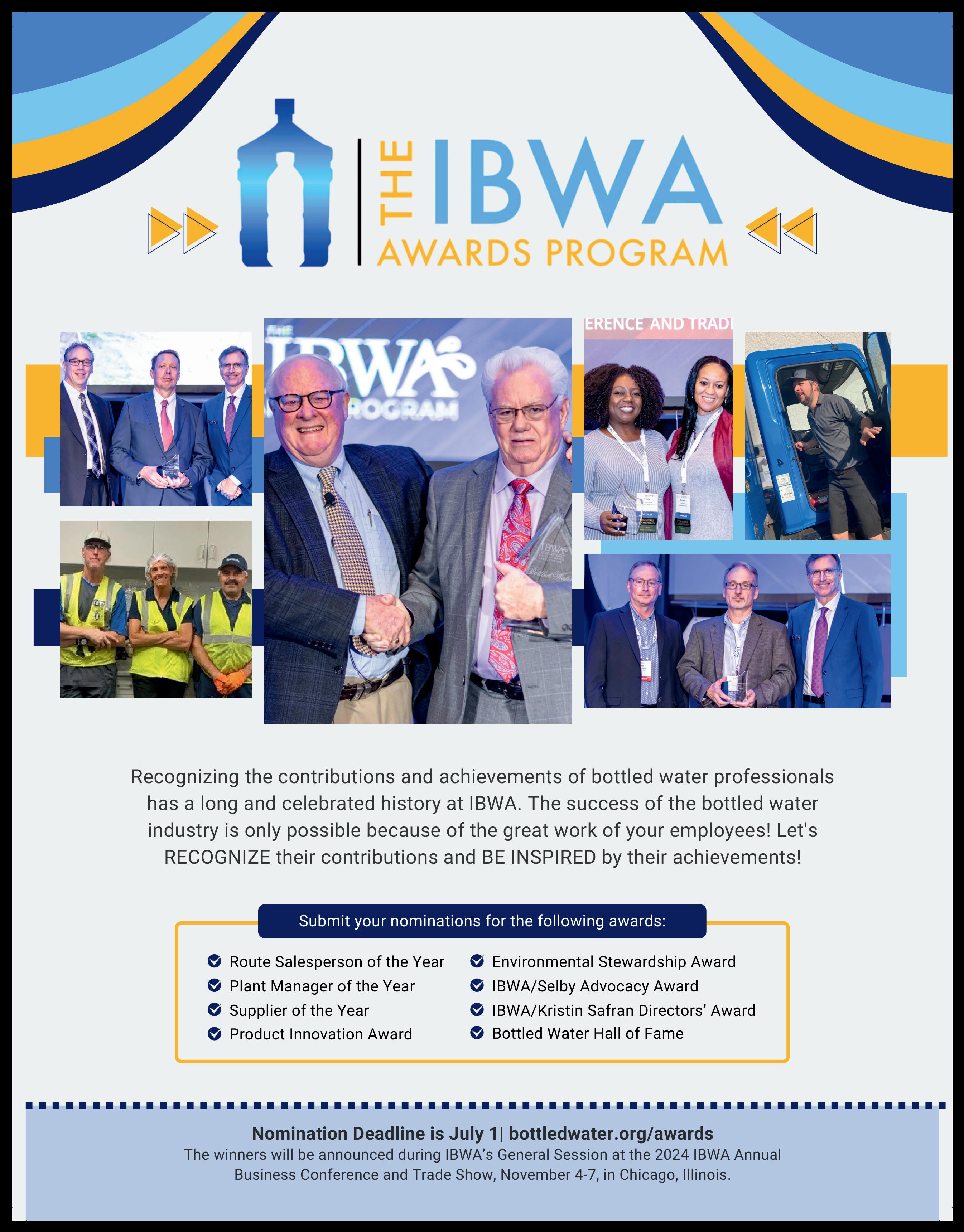

IBWA Paper Addressing Ingested Nano- and Microparticles In Food and Water Study Available EMERGING
On February 13, IBWA distributed to members a paper prepared by Joseph Cotruvo, PhD, titled “Ingested Nano- and Microparticles in Food and Water,” which is now available to members. Problems with a recent Columbia University study (bit.ly/NanoCU) that claimed to find nanoplastic particles in bottled water were addressed.
In the document, Dr. Cotruvo points out there are many issues with the identification and quantification of potential nano- and microplastic particles in the environment:
“Concerns about this recent study include:
1) only three brands of bottled water were sampled,
out of the thousands that are sold;
2) the authors used a novel testing method that has not been replicated or validated;
3) questions about whether nano- and microplastic particles (e.g., nylon) were properly distinguished from other commonly present organics, like proteins having similar chemical structures;
4) questions concerning potential contamination sources in the laboratory and from the air, which is a well-known source of particles;
5) how well the milled particles used as standards for comparison actually compared to the particles in the water being tested; and
Environmental Protection Agency’s Drinking Water Standards Division and director of the Risk Assessment Division in Toxics, and he is a long-standing member of the World Health Organization’s Drinking Water Guidelines Committee. Dr. Cotruvo was instrumental in the development of many drinking water standards and in the introduction of Drinking Water Health Advisories. He has a doctorate in physical organic chemistry, and he is board-certified by the American Academy of Environmental Engineers and Scientists.
6) the fact that the laboratory-processed water that was used in the test sample preparation was found to contain nano-and microparticles.”
Although not a formal scientific rebuttal to the Columbia University study, this paper can serve as a readerfriendly resource for IBWA and its members to use with the media, policymakers, and bottled water consumers (e.g., your customers).
In addition to addressing the Columbia study, the document also provides general information about nano- and microplastics.
Dr. Cotruvo is an expert on drinking water issues, having previously held positions as the director of U.S.
IBWA members can use this paper to help them respond to any consumer inquiries about nanoplastics.
IBWA members interested in obtaining Dr. Cotruvo’s response paper can contact IBWA Vice President of Education, Science, and Research Al Lear: alear@ bottledwater.org
LEARN MORE
Read the Technical Column (p.24) to find out why IBWA, the U.S. Food and Drug Administration, and the World Health Organization all agree that more research needs to be conducted on nano- and microplastics.
CONTAMINANTS
6 • BWR • WWW.BOTTLEDWATER.ORG
WATER NOTES
WATER NOTES
NUTRITION
IBWA Meets With Administration Officials to Promote Adding Water to MyPlate
On February 5, IBWA members and staff met with several representatives from the U.S. Department of Agriculture’s (USDA) Center for Nutrition Policy and Promotion (CNPP) and U.S. Department of Health and Human Services (HHS) to discuss the need to add a water icon to the MyPlate nutrition graphic.
MyPlate is the premier graphic used to promote the recommendations made in the U.S. Dietary Guidelines for Americans regarding the components of a healthy diet. The graphic includes representation of dairy, grains, fruits, vegetables, and proteins, but water is noticeably absent. However, at least 48 other countries include water in their nutrition guidance documents.
proposed revision that adds water to MyPlate is shown in the graphic below.

IBWA has been working for years to include a water icon on MyPlate to help ensure that consumers understand that drinking water is essential for good health. IBWA’s
RECOGNITION
Michael Bergeron, PhD, senior advisor and co-founder of the Hydration Health Center at the University of Hartford, joined IBWA during the meeting and shared information on the health benefits of drinking water with administrators. Dr. Bergeron reviewed how the health benefits coming from the other food groups currently represented on MyPlate are not possible without water. Therefore, promoting water on MyPlate is a key component of eating a healthy diet.
IBWA is currently working with congressional allies on a Senate letter to urge USDA and HHS to add a water icon to MyPlate. IBWA’s efforts to add water to MyPlate also include coordinating coalition efforts with the National Drinking Water Alliance and other interested trade and health organizations.
IBWA Launches 2024 Awards Program; Nominate
Your Colleagues and Employees
• Route Salesperson of the Year
• Plant Manager of the Year
• Up-and-Comer Recognition
• Supplier of the Year
• Environmental Stewardship Award
• Product Innovation Award
Are you looking for a way to recognize a colleague or employee for their outstanding work and contributions to the bottled water industry? We have the perfect opportunity for you: Nominate them for one of the many awards that are part of IBWA’s 2024 Awards Program!
Submitting your nominations is the best way to show your co-workers and the industry at-large how much their hard work and dedication is appreciated. It’s an honor they will never forget.
Visit www.bottledwater.org/awards for more details and to submit your nominations for the following awards:
• IBWA/Selby Advocacy Award (“The Selby”)
• IBWA/Kristin Safran Directors’ Award
• Bottled Water Hall of Fame
Award winners will be recognized during the General Session of the 2024 IBWA Annual Business Conference and Trade Show, being held November 4-7, 2024, in Chicago. For more information or if you have questions about IBWA’s award program, please contact IBWA Conferences, Meetings, and Programs Coordinator Amy Witt: awitt@bottledwater.org.
WINTER 2023/2024 • BWR • 7
IBWA's proposed MyPlate revision
FDA Publishes Revised Draft to the Preventive Controls for Human Food Guidance
An update to the U.S. Food and Drug Administration’s (FDA) “Hazard Analysis and Risk-Based Preventive Controls for Human Food: Draft Guidance for Industry” (PCHF Draft Guidance) has been released to address comments FDA received on previous drafts from 2016. The revised drafts of the Introduction and Appendix 1 provide additional context and information on hazards in food categories of current interest. This revised PCHF Draft Guidance adequately reflects FDA’s present thinking on the most relevant food safety hazards.
The revised Introduction explains the purpose of the guidance and provides additional general information. The glossary of terms has been expanded, and the guidance includes the following three new sections:
• Training: general information on training relevant to the PCHF rule.
• References: a comprehensive bibliography of references cited throughout the document—and some that are expected to be included in future chapters when released.

• Resources: a compilation of resources users will find helpful.
The guidance also has a revised draft of Appendix 1: “Known or Reasonably Foreseeable Hazards” (“Potential Hazards”). Informed by stakeholder concerns over specific hazard-commodity associations and use of Appendix 1 during inspections, FDA has made significant changes that include the following:
• the addition of new sections and descriptions meant to better explain the purpose of the Appendix, how it was developed, and how it should be used
• revisions to the product categories identified within the Appendix to better reflect food ingredients rather than finished products
• replacement of a series of processrelated hazard tables with a discussion of those hazards
• an updated discussion on food allergen hazards
• citations to scientific, technical, and regulatory information references, particularly for less-commonly known hazards identified for different food categories. Both the draft Introduction and Appendix 1 are available for public comment at regulations.gov under Docket No. FDA-2016-D-2343 within 120 days of publication in the Federal Register (bit.ly/FDA_PCdraft24) IBWA will review the draft guidance revisions and submit comments, if necessary.
DWRF Now Accepting Applications for Kristin Safran College Scholarship
The Drinking Water Research Foundation (DWRF) is now accepting applications for the 2024 Kristin Safran College Scholarship. DWRF will award two recipients a scholarship of $4,000 each. To help you inform your employees about this opportunity, IBWA has created a printable flyer (which you can download at bit.ly/KSscholar24), and we encourage you to spread the word by posting it in your company break rooms.
Each $4,000 scholarship will be awarded as $1,000 per year, over four years. If you know of a student entering college who could become DWRF’s next scholarship awardee, the Foundation welcomes the submission of their application with great enthusiasm and is excited to
help support another bright and talented student!
Criteria include the following:
• must be the child or grandchild of an IBWA member employee
• must be a high school senior (class of 2024) ranked in the top 20th percentile of their class
• must plan to attend an accredited undergraduate two-year or four-year college/university
DWRF plans to announce the winner in September 2024. Please submit all application materials no later than July 15, 2024. To learn more and access the application, visit https://thefactsaboutwater.org/researchstudies/dwrf-kristin-safran-college-scholarship-award/
REGULATIONS
WATER NOTES 8 • BWR • WWW.BOTTLEDWATER.ORG
EDUCATION
WATER NOTES

PACKAGING LEGISLATION
DRS and EPR Legislation Fail to Advance in Washington State
For the third session in a row, bills that would have established a beverage deposit return system (DRS) and an extended producer responsibility (EPR) system in the state of Washington have failed to pass their
MEMBER NEWS
Blackhawk
houses of origin prior to the legislative cutoff date. Two separate bills were introduced this year (one each for DRS and EPR); however, in previous sessions, the two concepts were introduced within the same bill.
IBWA supported passage of language on a DRS and would have preferred to see that combined with any EPR proposal instead of a standalone EPR bill.
In Washington, the second-year session of a
biennium is extremely short, and few legislative items make it pass the finish line because of the numerous cutoff dates and strict timelines. Both bills faced significant, vocal opposition and active attempts to derail the proposals. Although it was separated from the EPR package and had good support, the DRS bill still garnered a lot of opposition. Most of those opposing both bills pushed instead for a needs assessment alternative bill, which didn’t advance out of committee but may still see discussion as part of the state’s budget. IBWA expects both bills to be back in 2025, when there will be more time for consideration and additional time during the interim for further development.
Molding Company Celebrates 75th Anniversary
Founded in 1948, IBWA supplier member Blackhawk Molding Company, Inc. is celebrating its 75th anniversary. The company manufactured toys and parts for medical products for a decade before taking the opportunity to make plastic handles and assembly equipment for gable top cartons used in the dairy industry. That would evolve into the manufacture of caps/closures for the newly established plastic bottles that took over the bulk of packages used for fluid milk in America. In the 1980s, the company's innovative spirit continued as Blackhawk began producing caps for bottled water containers.
Blackhawk has sold several billion 55MM caps for 5-gallon HOD bottled water containers (available in several styles), with additional accessories available to the water market including delivery and storage products. New packaging

products for the water, milk, juice, and other industries are ensuring a bright future for Blackhawk. The company operates three manufacturing plants in the United States, has a licensee in Puerto Rico and a contract molder in Europe.
Three generations of the Hidding family continue the great work of the company today: Walter, the founder—a prolific inventor with more than 30 patents to his name; his sons Douglas, who led Blackhawk’s pioneering effort in establishing the 55MM cap, and Bob, who heads manufacturing and sales of larger caps, scoops, and other products—with both overseeing the company’s management; and his grandsons Kyle and Rob, who are committed to the family business. Learn more about Blackhawk at www.blackhawkmolding.com
WINTER 2023/2024 • BWR • 9



COVER STORY


Revolutionary Hydration Health Center
Revealing the Hydration-Health Connection

More and more, research is revealing the role of consistent consumption of water in promoting health and contributing to the prevention of chronic health issues as we age. The recently launched Hydration Health Center (HHC), at the University of Hartford (UHart), is on a mission to make known and reinforce the many benefits of drinking water by defining “optimal hydration practices and characteristics to promote health and well-being” through new and comprehensive scientific research. Founded in 2023, HHC staff have a vision for the Center to be an educational resource that leverages state-of-theart technologies and methods to study how the distinct patterns and profiles of hydration behaviors and status determine the pace, breadth, and extent of the impact of habitual water intake on acute and chronic health.
By Christine Umbrell
Leading the way are two research scientists who co-founded the HHC: Colleen X. Muñoz, PhD, an associate professor of health sciences at UHart and director of HHC, and Michael F. Bergeron, PhD, FACSM, a visiting scholar in the Department of Health Sciences at UHart and senior advisor of the HHC. They are spearheading the HHC, publishing and promoting key hydration-related information, and leading studies that will incorporate artificial intelligence (AI) and machine learning models to characterize and predict outcomes in terms of hydration and health. In fact, the respect for and support of the work that is coming out of the HHC inspired the Drinking Water Research Foundation, a nonprofit that educates the public about drinking water and the associated benefits of consuming water, and Niagara Cares, the charitable
WINTER 2023/2024 • BWR • 11
arm of Niagara Bottling, to make monetary contributions to help the Center initiate and continue its innovative studies and message. By sharing insights from the HHC’s research, IBWA members can not only help educate the public about the benefits of drinking water but also play a supporting role in improving the health and well-being of millions of consumers.
Go-To Resource for Consumers and Researchers
Evidence-based research serves as the basis for the HHC. “You would think that there’s a lot of [health-specific hydration information] available right now—but there’s really not,” says Muñoz. The HHC fills that void by serving as a “one-stop-shop” for information related to healthy hydration practices and outcomes. The HHC “gives the public a rational guideline as to the utility of water and its health-promoting advantages—not only in the immediate sense, but long-term, and to be the go-to resource,” adds Bergeron.
Educating the public—via evidence-based research—has become even more important with the rise of social media
HOW MUCH WATER IS “ENOUGH”? CHECK YOUR URINE
Water consumption is not a one-size-fits-all activity, according to the co-founders of the Hydration Health Center. Some global health organizations recommend that women should drink at least 2 liters (~68 fl. oz.) and men at least 2.5 liters (~85 fl. oz.) of fluids every day. But that approach is much too generalized, say Colleen X. Muñoz, PhD, and Michael F. Bergeron, PhD, FACSM.
Some people might need to drink more fluids to maintain their body water balance—“for example, spending time outside in warm-to-hot weather and participating in strenuous physical activity will require you to drink more,” says Muñoz. As a quick-and-easy self-evaluation, Muñoz and Bergeron recommend checking your urine color to help guide your fluid intake needs: If your urine is dark (like apple juice or iced tea) it’s time to drink more water. Conversely, if your urine color is clear or almost clear, then reduce your fluid intake for a while.
“The goal is to have urine color that is similar to light-colored lemonade,” says Muñoz. “Whereas more research is needed to help us determine how much, what, and when people across the lifespan should be drinking, we encourage you to examine your urine color regularly to assist in your efforts to feel and perform at your best.”
and misinformation. “There’s a lot of information on the internet that’s not necessarily true,” explains Muñoz. “I think people need to appreciate the quality of resources” they access for reliable information. For bottled water companies and consumers, “we need to focus on pointing people toward scientifically based resources,” such as the HHC.
In the scientific realm, “several investigations have shown data that suggest that the general public is frequently underhydrated,” says Muñoz. Given that knowledge, “we generally focus on working to get people to drink more water. But there are scenarios where it can go too far,” she says. “Healthy and effective hydration is a balance of pure water and other solids, or particles—like electrolytes and macronutrients. So, if you’re eating pretty regularly and you’re routinely drinking a good amount of water, then you’re probably OK. But also pay attention to your urine color, and if it’s getting to where it’s clear, then you want to back off on drinking water for a couple of hours. Clear and frequent urination suggests excessive water in circulation from overdrinking.”
“If the pace of water intake exceeds the capability of your kidneys to get rid of it, your blood becomes dilute,” adds Bergeron. “Healthy hydration is not water intake alone—it’s the pattern, the pace of intake, the frequency of intake, and what you’re drinking, and with what else,” says Bergeron. “A well-hydrated person encompasses the right amount of total body water and proper distribution.”
In addition to informing the public, the HHC serves a secondary purpose in the world of academia and research: “to stimulate more scientific research from fellow colleagues who already reside in the hydration science world, or those who have expertise in other aspects of science and medicine who also want to apply their research to a hydration and health scenario,” says Muñoz.
“We want the HHC to advance this field in an innovative, evidence-informed, and holistic way—because that’s where the current gaps are,” adds Bergeron. “People have been traditionally looking at hydration in a very narrow single-mechanism or correlational way, but our approach is to examine numerous interconnected and interdependent simultaneous connections in a longitudinal manner to better reveal the real-world impact from regular, appropriate consumption of water every day to health.”
One of the key tenets of the HHC is that individual hydration needs and impact should be considered across an age-based continuum, from youth through advanced age. Muñoz and Bergeron hope to clarify these age-specific insights by determining the distinct patterns and profiles
12 • BWR • WWW.BOTTLEDWATER.ORG
One of the key tenets of the HHC is that individual hydration needs and impact should be considered across an age-based continuum, from youth through advanced age.

of hydration behaviors, status, and resulting physiological influences that determine the pace, breadth, and extent of the impact of habitual water intake on acute and chronic health at all stages of life.
“We’re looking at a life-cycle approach,” emphasizes Bergeron. “We’re not looking at just an elderly population [or] a disease-risk population; we’re really looking at the entire continuum. Rather than being solely responsive, the goal for hydration health is to be preventative.”
Bergeron says one of the questions the HHC’s approach will consider is: “Are there indications in an adolescent, or a young adult, that might suggest there’s something beginning to evolve that would put you at greater health risk later if this were to continue?” He explains, “The temporal changes across the life cycle are where there is going to be great value in looking at that youth through advanced age approach—in the context of one’s own continuum of hydration-related health. And we should appreciate that your hydration behaviors as an adolescent likely have a measurable impact as an adult.”
Hydration Registry
While some tools and processes are still under development, Muñoz and Bergeron are setting the foundation to build a very large-scale data set, or “registry,” of hydrationrelated information. They plan to securely collect, organize, store, and analyze current and new physiological and behavioral metrics and biomarkers and other data within a dedicated evolving registry that will be used to reveal individual signatures of hydration-related health and clinical risk. They expect the registry to one day encompass both a local database and a cloud-based platform for profiling hydration behavior and health, guided by AI, advanced analytics, and modeling.
The registry will store data “from a lot of different populations, under different contexts, so that we can be a novel
and comprehensive hydration-related data resource” to other researchers and academicians, says Muñoz, and “support and incorporate many different scientific investigations.” To get things started, “the majority of the data will come from the HHC”—meaning investigations led by HHC staff—but they will in time expand the registry and allow others to contribute and utilize the information.
The types of information included in the database “will be very broad,” explains Muñoz. They plan to include descriptive characteristics and demographic factors such as sex, age, ethnicity, race, behaviors, and underlying disease states. “On top of all the hydration markers, we’ll include metrics that are either already established, or could be indirectly aligned with certain health conditions,” says Muñoz, “whether that be proteins in the blood associated with the blood’s ability to clot, or certainly numerous metrics related to kidney health. We’ll use all of those to determine and define patterns and interactions amongst the hydration variables, as well as the impact on and clinical indications of health.”
“We intend to start with healthy populations, but then our plan is to expand to selected clinical populations as well,” she says. The database will be robust enough “that if something scientifically interesting or clinically relevant pops up—such as a novel relationship that’s discovered, or a paradigm that nobody’s considered before in terms of interactions with hydration-related variables—then we have a new basis to turn to” to search for supporting evidence or similar patterns.
“The larger and more harmonized we get across data sets, the more utility such a database will have as far as providing research norms, or population normative values,” adds Bergeron. “As other researchers are looking to screen people, or to compare their data,” they can turn to the registry to help guide their own research.
HYDRATION WINTER 2023/2024 • BWR • 13

Clinical Tools
When you put a lot of information in a very complex machine learning environment, those metrics can be examined in aggregate and new meaningful relationships become evident.
In addition to developing a database, the HHC team expects to develop some clinical tools, leveraging advanced technologies, that can be used more commonly in a clinical setting to assess and evaluate hydration. These tools may also assist in gathering data that could be housed in the registry.
KEY ROLE OF HYDRATION IN YOUTH ATHLETES— ON AND OFF THE FIELD
For youth who participate in sports, daily hydration management and habitual hydration status are key considerations that may too often be overlooked, according to Hydration Health Center Co-Founder Michael F. Bergeron, PhD, FACSM. In his recently published article “The Healthy Youth Athlete—Reinforcing the Role of Hydration,” Bergeron shares that daily hydration management assists young athletes both during and after practice and play. Daily water intake patterns “profoundly impact and shape countless physiological processes aligned with growth and development,” according to Bergeron. Proper hydration can positively influence young people’s mental, physical, and thermoregulatory capacities.
Parents and coaches can model healthy hydration behaviors and help establish sensible hydration behaviors for youth athletes, but as they age, the athletes must learn to manage their own hydration needs and strategies— which will help them embrace healthy hydration habits that follow them into adulthood and contribute to long-term health. Read and download the full article on the Gatorade Sports Science Institute website: https://www.gssiweb.org/en/ sports-science-exchange/Article/the-healthyyouth-athlete-reinforcing-the-role-of-hydration.
One possibility is new technology designed to track hydration, or to consider someone’s individualized hydration needs in relation to other factors. “We envision such an instrument initially being an in-house software platform,” says Bergeron. “Down the road, it could develop into a remote application for personal handheld devices.” Or their registry and platform could also be integrated with contemporary evaluation devices developed by outside entities, according to Bergeron.
Developing a tool that can offer immediate feedback, “based on models built from our dataset,” would offer “some additional diagnostic clinical support,” explains Bergeron. Such a tool would be “driven by behind-thescenes validated models, to give you an immediate ability, either for yourself, or for persons you’re treating or researching, to say that based on X, Y, and Z”—for example, sex, age, health history, and some biometric parameters— “here’s an initial impression as to your potential risk” for underhydration. “An application—whether that’s a physical tool, or software application, or both—that can be updated remotely in an ongoing fashion—will be a simple and effective way to connect the users closer to the most current information we have on hand.”
Bergeron and Muñoz have been evaluating some of the metrics that have commonly been used to measure hydration, to determine which features to include in their database and any tools they develop. One key metric is urine color and concentration—and notably first-morning urine.
Last year, Bergeron and Muñoz published their initial findings on the value of studying first-morning urine samples in “Characterizing Hydration Practices in Healthy Young Recreationally Active Adults—Is There Utility in First-Morning Urine?” published in the International Journal of Sport Nutrition and Exercise Metabolism. In studying the diagnostic accuracy of first-morning urine, they concluded it is a cost-effective and relatively
14 • BWR • WWW.BOTTLEDWATER.ORG
easy way to accurately assess underhydration and routine hydration practices.
For data collection purposes, Muñoz points to “the ease in collection of a first-morning single sample, versus carrying a container around with you all day with your urine.” Such a sample is “minimally invasive and low burden” compared to blood collection or going to a lab. First-morning samples were found to be “very indicative of drinking behavior, not only over the last 24 hours, but over the past five days,” says Muñoz. “You can see the value, particularly as we’re trying to connect how much we’re drinking on a daily basis and chronic health outcomes—potentially for things like cardiometabolic and renal diseases,” in being able to generally assess one’s own hydration profile.
“It’s particularly helpful if we put even a simple measure such as first-morning urine color in the context of more information,” says Bergeron, which is where the database comes in. “If you take a single urine sample metric and you consider it under the influencing scenario and conditions inferred by other information, for instance physical activity, environment/climate, and drinking behavior—and if you incorporate some additional simple personal parameters such as age, and put all that into a validated model [from our database] to classify your likely hydration status, then there’s much more value in that single [urine] metric.”
“Modeling will be a big part of what we do,” adds Bergeron. The hope, for example, is “to take an individual’s profile, or a group’s profile of information, and objectively relate it to hydration status by a predictive model or ensemble of models that will classify that person for diagnostic clinical support.” By building “a very robust, multidomain registry of information, our models are more valuable. The bigger we get, the smarter our models will be.”
Integrating AI
Once the registry is up-and-running and populated with a wide variety of data, the scientists will leverage advanced technologies to study hydration. “We’re actually implementing AI and some machine learning to address complex relationships that are not reductionist-oriented—that is, single mechanism only,” says Muñoz.
“Part of the problem with the traditional scientific approach is: You come up with a hypothesis using specific variables that you think are causal,” adds Muñoz, “but it’s important to make sure biases aren’t getting in the way.” Using more objective and robust AI tools, HHC’s
CONTRIBUTE TO

Interested in donating to the Hydration Health Center (HHC) at the University of Hartford? Visit www.hartford.edu/hydrationhealth and scroll down to access the “Contact Us” form, located at the bottom of the webpage. The HHC team will reply and provide donation instructions.
early research is showing that some of the “psychological data,” such as attitudes, beliefs, and behaviors surrounding hydration, have significant impact on hydration status. “To our surprise, the most important features that were related to someone’s hydration behavior were their attitudes and beliefs about their hydration, as opposed to their physiology, that was driving their intake patterns,” says Muñoz.
“Rather than solely traditional, easily interpreted correlations,” says Bergeron, “when you put a lot of information in a very complex machine learning environment, those correlations are there, but they may not be as strong—not as evident—and meaningful as when the metrics are examined in aggregate. Those underlying networks of higherorder relationships are more likely to reveal the real-world influences of hydration.”
“This is how the human body works—as a complex psychobiological network,” says Bergeron.
More To Come
Bergeron and Muñoz are excited about the HHC and the information and insights they are already collecting regarding hydration and health. “All the work we’ve outlined so far is going to take us into the next several decades,” says Muñoz.
Along the way, the researchers hope to boost their funding, and suggest that companies consider making contributions. “We are going to need support,” says Muñoz. “People see the value in the scientific information but forget that it costs a lot of money to do well.” BWR
Christine Umbrell is a freelance writer based in Herndon, Virginia. Email her at christineumbrell@gmail.com
HYDRATION WINTER 2023/2024 • BWR • 15



Many issues of importance to the bottled water industry have already received a lot of attention this year. Here’s what you— and your customers— need to know.
By IBWA staff
UNPACKING CURRENT INDUSTRY ISSUES & FINDING
CONTENT TO SHARE WITH YOUR CUSTOMERS
Bottled water, the No.1 packaged beverage in the United States, has experienced exponential sales growth over the years, driven by consumer preferences for convenience, our historically sound safety record, and the benefits of healthy hydration. However, when you hold the title of America’s favorite drink, you are going to come under a lot of scrutiny—and critics of bottled water take advantage of every opportunity to twist a tale to benefit their ultimate goal: to remove bottled water products from store shelves.
Recently, several issues have garnered a lot of media attention, such as nanoplastics, per- and polyfluoroalkyl substances (PFAS), the environmental impact of our products, and the need for guidance that can help consumers make healthier diet choices. Because IBWA promotes transparency and focuses on the facts, the Association has investigated these important concerns to ensure our members and their customers have the information they need to make informed decisions. The text that follows provides a summary of IBWA’s current positions on these important, and evolving, topics.
Why the Jury Is Still Out on Nanoplastics
News outlets have published quite a few articles on nanoplastics recently. Some of that attention stems from a study that was published in January of this year. Columbia University researchers investigating the capability of a new technology (i.e., hyperspectral SRS microscopy) claimed to have detected nanoparticles in water (bit.ly/NanoCU). Those researchers chose bottled water as their medium, as other researchers have done before them, because water (being 99.99% H2O and having very high purity) is the simplest food matrix to analyze. The conclusion of this particular study is that, allegedly, by using hyperspectral SRS imaging, researchers were able to detect “two to three orders of magnitude more” particles in bottled water than previously reported.
While many of the studies on microplastics (and now nanoparticles) have mentioned bottled water, it is important to note that bottled water is just one of thousands of food and beverage products packaged in plastic containers. Food manufacturers and consumers alike prefer plastic packaging because of its transparency, light weight, and recyclability. Moreover, and perhaps even more important, we have to remember that nano- and microplastic particles are considered omnipresent; they are found in all aspects of our environment: soil, air, and water.
IBWA asked Joseph Cotruvo, PhD, to review and provide his opinion on the Columbia University study. Dr. Cotruvo is an expert on drinking water. He has previously held the positions of director of the U.S. Environmental Protection Agency’s (EPA) Drinking Water Standards Division and director of the Risk Assessment Division in Toxics, and he is a long-standing member of the World Health Organization’s

Nano- and microplastic particles are considered omnipresent; they are found in all aspects of our environment: soil, air, and water.
(WHO) Drinking Water Guidelines Committee.
His conclusion is that “we are a long way from being able to draw conclusions from the Columbia University study and other microplastic studies.” Some of Dr. Cotruvo’s concerns with this study are listed below:
• Only three brands of bottled water were sampled, out of the thousands that are sold.
• The authors used a novel testing method that has not been replicated or validated.
• Questions remain about whether nano- and microplastic particles (e.g., nylon) were properly distinguished from other commonly present organics, like proteins having similar chemical structures.
• There are questions concerning potential contamination sources in the laboratory and from the air, which is a well-known source of particles.
• The question of how well the milled particles used as standards for comparison actually compared to the particles in the water being tested.
• The fact that the laboratory-
processed water that was used in the test sample preparation was found to contain nano- and microparticles.
Dr. Cotruvo’s opinion is that “research should…continue on the toxicology and analytical processes, and the greater question of whether there are any health risks from ingestion of these very small particles”—and he is not alone. WHO and the U.S. Food and Drug Administration (FDA), the agency that regulates bottled water as a food product, agree that more research needs to be done before any statements about health effects can be made. For more on the review of nanoplastics by WHO and FDA, read the Technical Update column on p.24.
IBWA’s PFAS Standards Outpace Federal and State Policies
PFAS are special chemicals used to make many products resistant to heat, oil, grease, and water. They are added to everyday items like nonstick pans, stain-proof clothes, water-resistant fabrics, fast-food wrappers, and cleaning supplies. The reason PFAS are so useful is that they contain
KEY ISSUES WINTER 2023/2024 • BWR • 17
At least 45% of the tap water in the United States is estimated to be contaminated with one or more types of PFAS.
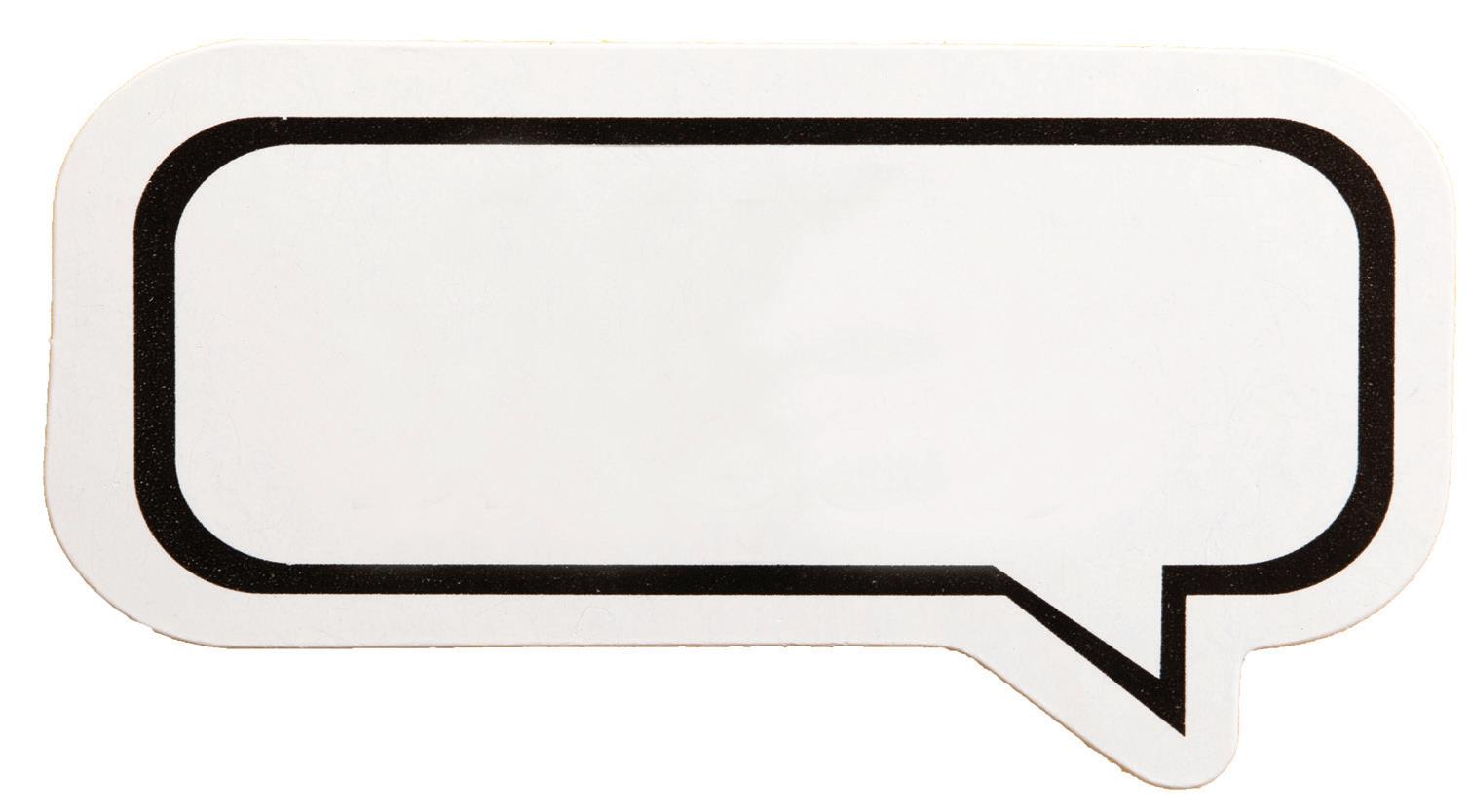
incredibly strong bonds between carbon and fluorine atoms. Those bonds don’t break down over time, which is great for making durable products that require less maintenance.
But there is also a downside to that durability. Because PFAS don’t break down easily, they can stay in the environment for a very long time—decades, possibly centuries, which is why they are often referred to as “forever chemicals.” That means they can end up in places we don’t want them, like the earth’s water and soil. As more and more PFAS build up all around us in water, air, and soil, there is growing concern about how they might impact human health and nature. Because they’re so widespread, figuring out how to deal with them is really important.
That’s why PFAS has become a significant topic of debate among scientists, governments, and the companies that produce them. The key questions are where do PFAS come from, how dangerous are they, and do we need new rules to manage them safely?
Late in 2023, news articles published throughout the United States mentioned a U.S. Geological Survey (USGS) study that revealed at least 45% of the tap water in the United States is estimated to be contaminated with one or more types of PFAS. These forever chemicals can lead to adverse health risks in people.
The ongoing media attention surrounding PFAS in tap water may have caused some consumers to question if bottled water is a safe and reliable drinking water alternative.
In November 2019, IBWA asked FDA to establish a standard of quality (SOQ) for PFAS in bottled water. FDA responded to IBWA’s request stating that “establishing an SOQ for PFAS in bottled water at this time would not significantly enhance FDA’s mission of public health protection.” This was based upon FDA’s testing and analysis of 30 different bottled water products, with none of them showing any detectable levels of PFAS. FDA again tested bottled water in June of 2023, and those results were all negative for PFAS.
While not mandated by FDA, IBWA requires its members, which represent approximately 73% of the U.S. bottled water market by volume, to test for 18 PFAS substances in all the products they sell. In addition, IBWA member companies must meet the following SOQs for PFAS in their bottled water products:
• 5 parts per trillion (ppt) for detection of a single PFAS compound
• 10 ppt for detection of two or more PFAS compounds
Currently, the EPA doesn’t have a Maximum Contaminant Level (MCL) for PFAS in tap water. A proposal has
been made to go from a health advisory level of 70 ppt to an MCL of 4 ppt for six PFAS substances in tap water. Yet, such a huge decrease will likely receive pushback due to the associated costs of updating the public water infrastructure and production processes.
Consumers who are concerned about drinking water that contains PFAS should contact their bottled water company and request to see testing results for PFAS. If consumers are not able to obtain the PFAS information they want from a bottled water bottler, they have the option to switch to another brand. The same can’t be said of public water systems, as consumers don’t have the option to choose another source for their tap water.
Science Says: Bottled Water Is Most Eco-Friendly Packaging Among Beverages
Time and time again, when critics of bottled water work to implement a sales ban on our products they repeat myths touting the negative impact of bottled water containers on the environment. Those myths have been repeated so often that to the uneducated they may appear to be true. But here’s the unpopular fact: Bottled water products packaged in plastic have the least impact on the environment compared to all other packaging types, including aluminum cans, glass bottles, and paperboard cartons.
In 2021, IBWA funded research that reviewed the life cycle analyses for the popular single-serve beverage packaging types listed above. Trayak, a product sustainability consulting firm, conducted the study, and the results showed that PET water bottles have less environmental impact than the alternatives in terms of greenhouse gas emissions (GHG), fossil fuel use, water use, freshwater eutrophication, and freshwater ecotoxicity. (Visit bit.ly/ DrinkPackaging to view an infographic of Trayak’s results.)
18 • BWR • WWW.BOTTLEDWATER.ORG
Because that research was funded by IBWA, we know that our critics will attempt to state there’s an industry bias in the conclusions. Thus, if someone is critical of Trayak’s findings, IBWA has an increasing number of studies to share with our critics. Most notable is the 2023 McKinsey & Company report that shows “PET bottles have the lowest [GHG] emissions because of their lightweight properties and the low amount of energy required to produce them. By contrast, aluminum cans have two times the emissions of PET bottles, and emissions from glass bottles are three times higher.” What’s interesting about the McKinsey study is that it compares PET soda bottles, rather than PET water bottles, with other packaging types. If McKinsey & Company had included PET water bottles in its report, it is highly likely that the report would have found an even greater disparity between GHG emissions when compared with aluminum cans and glass bottles because bottled water containers use significantly less plastic than soda. The average PET water bottle weighs 8.3 grams; a PET soda bottle weighs, on average, 22.2 grams.
Hydration’s Place at the Table: Why Water Needs Representation on MyPlate MyPlate—the nutrition graphic based on the Dietary Guidelines for Americans (DGAs)—is a simple guide to help people eat healthier. It shows a plate divided into four parts, with individual sections containing fruits, vegetables, grains, and protein, with a dairy icon on the side. At least 48 countries include water on their nutrition guidance documents, but the United States isn’t one of them.
When the current edition of the DGAs was issued in 2020, IBWA was pleased that several of the association’s recommendations were included. Notably, the current guidelines state that calorie-free drinks—especially

The plastic used for bottled water containers has less impact on the environment than any other beverage packaging material.
water—should be the primary beverages consumed. The guidelines also encourage a shift to healthier, nosugar added beverages, such as water, in place of sugar-sweetened beverages. The 2020 DGAs stress how important it is for older adults to drink plenty of water; however, water is still not included on the current MyPlate.
The process of updating the DGAs for the 2025-2030 edition is underway, and IBWA continues our work to have water added to MyPlate, which is published by the U.S. Department of Agriculture’s (USDA) Center for Nutrition Policy and Promotion. Our efforts include submitting recommendations to the Dietary Guidelines Advisory Committee and holding briefings and events on Capitol Hill in support of adding water to MyPlate. As recently as February, IBWA members and staff, along with Michael Bergeron, PhD, senior advisor and co-founder of the Hydration Health Center at the University of Hartford, met with several representatives from USDA and
the U.S. Department of Health and Human Services to discuss the many health benefits of drinking water.
IBWA’s goal is to ensure the continued recognition of the important role water plays in a healthy diet and ultimately to have water included on the MyPlate nutrition graphic, in addition to dairy.
Keeping Up to Date on the Issues
The landscape of the bottled water industry is ever evolving, and the key issues often change depending on the political climate. To help members stay on top of all the important industry issues, IBWA has developed a webpage that will serve as your go-to resource for understanding the key topics and trends impacting bottled water. IBWA staff hope that this webpage will be of significant value to members, and we encourage you to bookmark the page and refer to it as needed when you or your customers have any questions regarding industry issues: www.bottledwater.org/key-issues BWR
KEY ISSUES WINTER 2023/2024 • BWR • 19

During the June 2023 Capitol Hill visits, Rep. Susan Wild (D-PA) met with IBWA members James Linton (Premium Waters), Marge Eggie and Dan Kelly (Polymer Solutions), Johnathan Wilson (Premium Waters) and Derieth Sutton (Niagara) to discuss the benefits of adding water to MyPlate.
Why IBWA Members Choose to Engage in Advocacy Efforts
By Cory Martin, IBWA Vice President of Government Relations
Member engagement in IBWA’s advocacy efforts is incredibly important and effective. When you make time to participate in meetings with local, state, and federal legislators, you have an opportunity to establish personal relationships, provide policymakers a better understanding of your business operations and industry, and get results.
But you don’t have to take my word on the positive impact of member engagement. Some of your IBWA peers have provided feedback on why they choose to engage in the Associa -
tion’s advocacy efforts and if they have any memorable experiences from their meetings with legislators. Together, we can learn from their experiences the value of engaging in personal advocacy efforts.
Why do you choose to engage in IBWA’s advocacy efforts?
Joe Bell, Aqua Filter Fresh: We must embrace advocacy efforts for our industry because we face challenges from almost every level of government regulation.
We need more representatives from the industry to meet with their local, state, and federal elected officials to make sure our voice is heard. We saw effective meetings in Washington, DC, and Harrisburg, PA, on bottled water bans, recycling, and industry regulations. A little effort goes a long way.
Lance Song, Absopure Water Company: My involvement with IBWA and having worked for the bottled water industry for the last 20 years gives me a holistic view. I have a profound connection to IBWA’s mission to bring change through
20 • BWR • WWW.BOTTLEDWATER.ORG
public awareness, fostering relationships with key stakeholders, and perchance influencing and educating participants on specific issues and policies.
Engaging in advocacy efforts allows IBWA members to influence policies, laws, and practices at various levels, whether it’s local, state, national, or even international. By advocating for specific issues or causes, bottled water professionals can work towards positive change and address potential concerns. Without that engagement, policymakers have little connectivity with the bottled water industry and our perspective on important issues. Thus, they are at severe risk of making poorly informed policy decisions that could negatively impact your business.
Do you have a memorable experience from engaging in IBWA advocacy events?
Jillian Olsen, Cherry Ridge Consulting: All the IBWA Hill Day visits were memorable in their own way. The staffers and members of Congress we meet with are engaged, and we are all well-prepared by the IBWA team on the topics of interest. We all come together as an industry; the boundaries of individual companies left somewhere on the bus we took to get to the Hill. It is an experience everyone should have at least once in their career with the bottled water industry.
Chris Layton, Halls Water: When Halls Water became aware that the City of Irvine was considering a ban on ½ liter packaged water, we were concerned that the consuming public would be denied a proven resource to hydrate in many activities. While the sale of ½ liter packaged water is not a product we sell, it is a product we provide at no charge to multiple youth activities as well as fundraising events throughout our marketplace. Short notice for the City Council meeting to address their potential
LEGISLATORS WANT TO HEAR ABOUT HOW POLICY DECISIONS AFFECT YOUR BUSINESS.
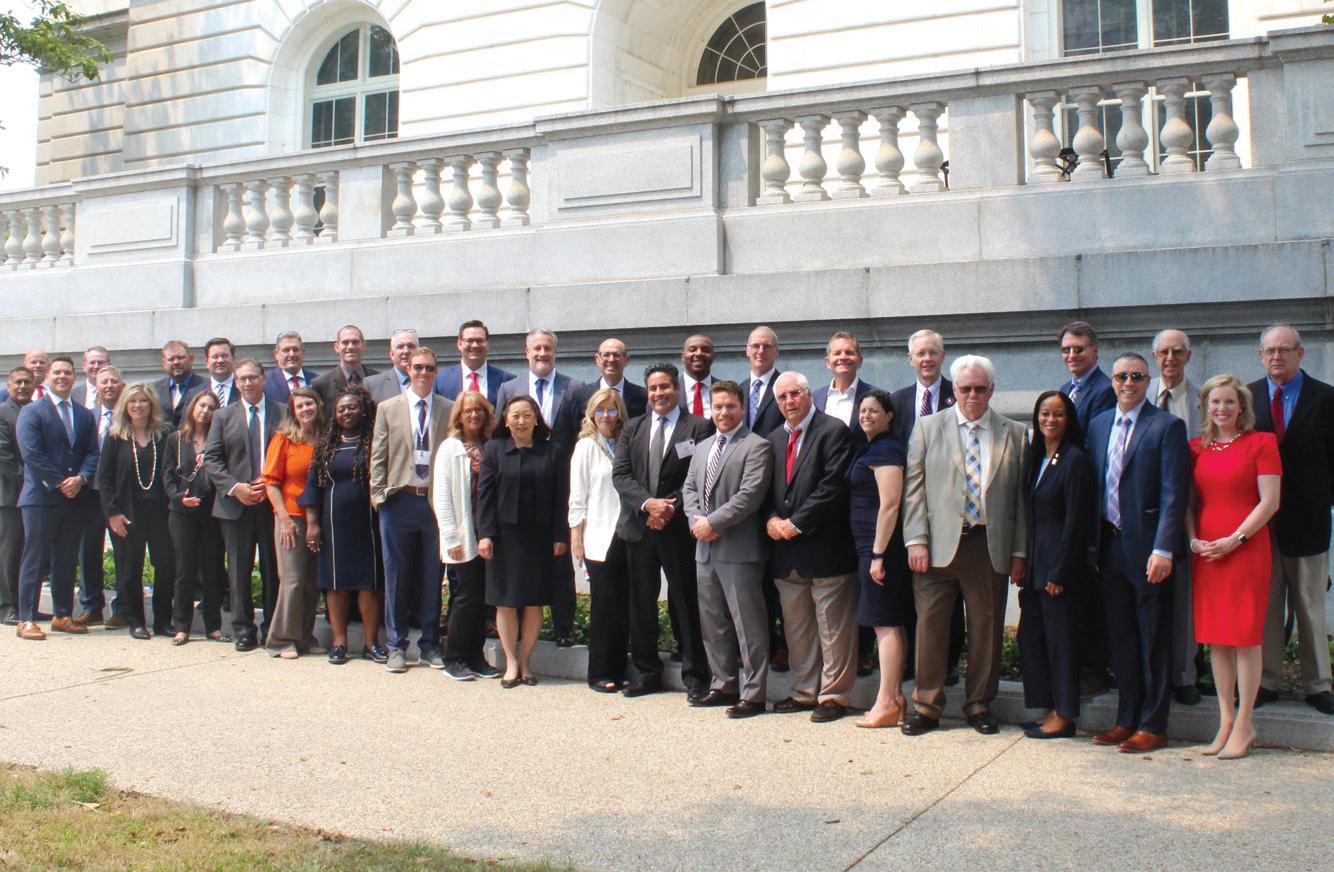
ban encouraged us to reach out to our customer base in Irvine. A considerable number of our customers called and wrote letters, texts, and emails to the City Council asking for restraint of the recommended action, and they made a decision to continue studying the issue. We did not take lightly the decision to ask our customers to engage on this issue. We did consider it important to be a full partner in the effort to defend the overall industry.
Engaging in IBWA advocacy efforts enables you to work together with your industry peers to overcome concerns impacting bottled water. It creates a common purpose and focus, providing wonderful opportunities to engage with others in the industry and work towards the benefit of the entire industry. It also gives you the chance to engage with your customers, showing that you care about their needs.
IBWA members need to remember that your business has a story to tell,
and policymakers yearn to hear it as they crave real-world knowledge on how industry operates. For these reasons, I strongly encourage you to be like Joe, Lance, Jillian, and Chris—and choose to engage and make a difference! BWR
JOIN US IN DC!
Start planning now to participate in our annual Capitol Hill Day on June 5, in Washington, DC. The advocacy event coincides with IBWA’s Board of Directors and Committee Meetings being held in Alexandria, Virgina, June 3-6, 2024.
WINTER 2023/2024 • BWR • 21 GOVERNMENT RELATIONS
IBWA member participants of the association's 2023 Capitol Hill Day

IBWA Battles False Narratives About Bottled Water Packaging With Facts and Allies
By Jill Culora, IBWA Vice President of Communications
A key part of IBWA communications activity is monitoring social chatter about bottled water. As the tone of the chatter can sometimes be negative, we are witnesses to the real-time impact of the false narratives our critics promote. Online, there are some vocal voices not only against bottled water but also
our plastic packaging (and plastics in general). Thus, IBWA Communications team members often find themselves working in the trenches—analyzing that chatter and scrutinizing antibottled water news articles. When you take such a deep dive into the published false, inaccurate, and misleading stories,
you have to have thick skin, otherwise you’ll become demoralized by all the propaganda. However, our mission to market the facts about bottled water never waivers, and we see some good news on the horizon.
A study by Columbia University researchers claiming to find nanoparticle
22 • BWR • WWW.BOTTLEDWATER.ORG
plastics in bottled water raised an alarm earlier this year. That research was published shortly after the U.S. Geological Survey reported nearly half of the population’s tap water could be contaminated with per- and polyfluoroalkyl substances (PFAS). That left many people, including the media, wondering what type of water is safest to drink?
When journalists reached out to experts, they soon learned that the possibility of nanoplastics in bottled water was not an isolated event. Nano- and microplastic particles are found in all aspects of our environment–soil, air, and water. And, as IBWA routinely points out to legislators, consumers, and the media, bottled water is just one of thousands of food and beverage products packaged in plastic containers.
Broadening out the nanoparticle discussions has, rightly, helped to take the spotlight off bottled water. News stories have identified several ingestible products that contain microplastics, such as meat, fish, tea, and beer. In the more recent coverage, the origins of plastic particles are often addressed, citing dust in the air, tire residue on roads, loosened fibers from washing clothes, and even the plastic wrap used on individual detergent pods.
As these origin revelations came to pass, many scientists stepped forward to defend the use of plastics in our everyday lives. For a while now, in addition to promoting bottled water as healthy hydration and educating the public and legislators about our stringent industry regulations, IBWA has also been explaining how plastic bottled water containers have the lowest environmental impact of all beverage packaging materials, including aluminum cans, glass bottles, and paperboard cartons. We’ve also promoted recycling as a way to recapture this valuable resource for reuse. Without support, defending bottled water packaging can be a lonely effort, so we are grateful more scientific
SCIENCE SHOWS THAT PLASTIC IS THE GREENEST PACKAGING OPTION FOR BEVERAGE CONTAINERS.
experts have increased their plastics advocacy and are reminding people why producers and consumers alike prefer plastic for food packaging.
Among the scientists stepping forward to defend plastics is Chris DeArmitt, PhD, an independent scientist with decades of experience solving technical problems for some of the world’s leading manufacturing companies. He is a fellow of the Royal Society of Chemistry and a fellow of the Institute of Materials, Minerals and Mining. He is also author of The Plastics Paradox, a book that outlines the value of plastic and how environmental groups are misleading the public.
DeArmitt says his book is “the first comprehensive, scientific overview of plastics materials and the environment covering all topics including waste, litter, microplastics, degradation, ocean plastics and more.”
In his book, Dr. DeArmitt points out that plastics make up approximately 0.4% of the materials used globally [others include concrete 84%, natural (mostly wood) 9%, metals (mostly steel) 6%, and polymers (mostly plastic) 1%]. He also points out that plastics make up only 13% of household waste. Municipal waste makes up only 3% of all waste; industrial waste makes up 97%. In discussing the life cycle analysis (LCA) of plastic, Dr. DeArmitt aligns with the McKinsey & Company (bit.ly/McKinsey_GHG22) and Trayak (bit.ly/Trayak_LCA2021) reports, which show plastics are the greenest choice for beverage containers. In recent
months, Dr. DeArmitt has been vocal on LinkedIn, providing comments and links to information on the 50 LCA studies that all conclude plastics have the lowest impact on the environment.
Having scientists, equipped with their knowledge and experience, adding their voices to the discussion about plastics’ environmental impact is a gamechanger. But we know to make a real impact we need even more voices. That’s why IBWA recently joined a coalition formed by the Plastic Industry Association. The aim of this coalition is to educate legislators about the positive environmental impact of using plastic instead of other material types for packaging, which includes food and beverage packaging. The recent development that more facts about using plastic as a packaging material is being reported offers a glimmer of hope on the horizon. We aren’t saying the plastics issue is solved, but, increasingly, we are in good company in the battle against the war on plastic. BWR
WINTER 2023/2024 • BWR • 23 COMMUNICATIONS

IBWA Responds to Columbia University Study on Nanoplastics in Bottled Water
By Al Lear, Vice President of Science, Education, and Technical Relations
In January of 2024, a study released by Columbia University researchers Qian et. al., titled “Rapid single-particle chemical imaging of nanoplastics by SRS microscopy,” received a lot of attention from the media. The study sampled three brands of bottled water (two bottles per brand) claiming to have found a new way to test for nanoplastics. The researchers developed an optical imaging technique for rapid analysis of nanoplastics with unprecedented sensitivity and specificity.
Nano- and microparticles are infinitesimally small and cannot be seen without the use of a microscope
or other device. Common bacteria (e.g., E.coli and coliforms) are about 1 to 2 microns (micrometers) in length and about 0.5 to 1 micron in width. In comparison, nano-sized particles are smaller than 1 micron, down to about 1 nanometer (1 billionth of a meter). To put it in perspective, about 10 million nanoparticles would fit in a centimeter (which is less than half an inch in length).
IBWA Media Response
IBWA prepared a position paper to provide to our members and the media in response to the release of the study,
urging people to withhold any opinions on the topic until scientists develop a more thorough understanding of microand nanoplastics. We highlighted the fact that, until more research is conducted, media reports about these particles in drinking water do nothing more than unnecessarily scare consumers. IBWA’s position paper went on to explain the following points in more detail.
Water Is the Best Food Matrix to Analyze
Nano- and microplastic particles are found in all aspects of our environment:
24 • BWR • WWW.BOTTLEDWATER.ORG
soil, air, and water. So, while many microplastic studies (and now nanoparticles) have singled out bottled water, it is important to note researchers use water to develop their testing methods because it is the easiest food matrix to analyze. In addition, research has shown that there is no justification in any suggestion that drinking water is a major route for oral intake of nano- and microplastics (bit.ly/Ossmann_2021).
In her 2021 paper, “Microplastics in drinking water? Present state of knowledge and open questions,” Barbara E. Ossmann, of Germany’s Bavarian Health and Food Safety Authority, cautions against jumping to unfounded conclusions: “Projections on the total intake of microplastics by humans via foodstuff should be made with care. Conclusions on the major intake pathways are not justified, yet. Instead, harmonized, valid methods and more research are needed to reliably determine microplastics in drinking water and more complex foodstuff.”
It is important to note that bottled water is just one of thousands of food and beverage products packaged in plastic containers. Indeed, researchers studying microplastics conclude they may have found these particles in tea bags, beer, fish and shellfish, fruits and vegetables, paper coffee cups (the thin plastic coating comes apart with hot contents), and salt.
Lack of Standard Methods and Scientific Consensus on Health Impacts of Nanoand Microplastics
Currently, there is both a lack of standardized methods and no scientific consensus on the potential health impacts of nano- and microplastic particles. After reviewing the available studies concerning water, food, and beverages, the World Health Organization (WHO) concluded that no adverse health effects could be
IBWA, FDA, AND WHO AGREE: MORE RESEARCH NEEDS TO BE CONDUCTED ON NANO- AND MICROPLASTICS.
drawn from dietary exposure to nanoand microplastic particles less than 10 microns due to minimal scientific research (bit.ly/WHO_nano2022) WHO’s recommendation is for more research to be conducted, as well as establishing standardized methods for measuring and quantifying nano and microplastics.
Bottled Water Is Comprehensively Regulated By FDA
The U.S. Food and Drug Administration (FDA) has stated its position on the Columbia study and nano- and microplastics in general:
• "While there is evidence that microplastics and nanoplastics are entering the food supply … there is a lack of evidence demonstrating that microplastics or nanoplastics occurrence in food poses a risk to human health.
• This is an area where the FDA has not only been monitoring the research but also working to advance the science through analysis of testing methodologies and other related work, including participation in the United States Government Nanoplastic Community of Interest.
READ THE RESEARCH
• The FDA is not aware of scientific evidence that would support consumers being concerned about the potential level of microplastic or nanoplastic contamination in food, including bottled water."
Because there is no scientific evidence to suggest that nano- and microplastic particles pose a health risk, FDA has not issued any regulations concerning these substances in foods and beverages. Any regulatory action concerning nano- and microplastic particles needs to be based on sound science, including demonstrating a correlation between the levels of this substance found in foods and beverages and any potential adverse health effects.
As nano- and microplastics is a developing topic, IBWA will continue to follow any scientific developments on this subject closely. As always, IBWA is committed to helping our bottler members provide their customers with the safest and highest quality products. If you have questions, please contact IBWA Vice President of Science, Education, and Technical Relations Al Lear: alear@bottledwater.org. BWR
Interested in keeping on top of the evolving topic of nanoplastics? Start with reading the research mentioned in this column.
• Dietary and inhalation exposure to nano- and microplastic particles and potential implications for human health. Geneva: World Health Organization; 2022. Available at: https://bit.ly/WHO_nano2022.
• Microplastics in drinking water? Present state of knowledge and open questions. Ossmann, B. E. 2021. Current Opinion in Food Science, 41, 44–51. Available at: https://bit.ly/Ossmann_2021.
TECHNICAL UPDATE
WINTER 2023/2024 • BWR • 25
IBWA
certified plant operators (CPOs) are encouraged to complete the following quiz for ½ IBWA continuing education unit (CEU). The questions are derived from material presented in this issue of the Bottled Water Reporter, the IBWA Plant Technical Reference Manual, and the IBWA Bottled Water Code of Practice. Submit this quiz as a PDF to IBWA Vice President of Education, Science, and Technical Relations Al Lear: alear@bottledwater.org. Look for additional quizzes in future issues and earn additional IBWA CEUs!
Check your selection for each question
1|The current FDA standard of quality for added fluoride in finished product is _____________:
O 0.5 mg/l
O 0.7 mg/l
O 2.0 mg/l
O Dependent on regional ambient temperature
2|Common bacteria (e.g., E.coli and coliforms) are about _______ in length.
O 9 to 10 microns
O 49 to 50 microns
O 1 to 2 microns
O 19 to 20 microns
3|All bottled water products shall be free of total coliform bacteria, including ______.
O Escherichia coli
O Pseudomonas aeruginosa
O Mold and algae
O Bacillus subtilis
4|The Columbia University study sampled ___ brands of bottled water.
O Two
O Three
O Four O One
5|A positively charged ion is a/an _____
6|Calcium, magnesium, and iron content in water contribute to its _____, measured in mg/l as CaCO3.
O Acidity
O Alkalinity
O Specific gravity
O Hardness
7|Researchers studying microplastics conclude they may have found these particles in ___, beer, fish and shellfish, fruits and vegetables, paper coffee cups (coated with thin plastic that comes apart with hot contents), and salt.
O Paper bags
O Grocery bags
O Tea Bags
O
All of the above
8|In January of 2024, a study was released by Columbia University researchers Qian et. al. titled, “Rapid single-particle chemical imaging of nanoplastics by ___ microscopy.”
O Optical
O Electron
O Light
O SRS
9|In water softening, ____ replaces the elements causing hardness.
O Iron
O Sodium
O Magnesium
O Manganese
10|Bottled water is comprehensively regulated by the _________.
O Environmental Protection Agency (EPA)
O United States Department of Agriculture (USDA)
O Food and Drug Administration (FDA)
O Federal Trade Commission (FTC)
26 • BWR • WWW.BOTTLEDWATER.ORG CPO QUIZ
Name Company Address City State/Province ZIP/Postal Code
O a. Anion
O b. Neutron O c. Cation
O d. Proton
• MARCH 26-27
CSBWA Spring Educational Conference and Trade Show
Hollywood Casino St. Louis Maryland Heights, MO
• APRIL 8-10
Affiliated States
Bottled Water Association Convention and Product Fair
Lanier Islands –Legacy Lodge Buford, GA
• MAY 15-18
Northwest Bottled Water Association Annual Convention and Trade Show
The Hotel Murano Tacoma, WA
• JUNE 3-6
IBWA Summer Board of Directors and Committee Meetings and Capitol Hill Visits
Hilton Old Town Alexandria, VA
• SEPTEMBER 26-27
Northeast Bottled Water Association
Fall Conference Saratoga Hilton Saratoga Springs, NY
• NOVEMBER 4-7
IBWA Annual Business Conference and Trade Show Chicago Hilton Chicago, IL (in conjunction with PACK EXPO)






Blackhawk Molding Co
www.blackhawkmolding.com
Inside Front Cover
Brio Water Technology www.briowt.com
Outside Back Cover
Polymer Solutions Int'l www.prostack.com
Inside Back Cover WANT TO ADVERTISE IN IBWA MEDIA?

Contact Stephanie Reyna: stephanie@bottledwater.org or 817.719.6197.
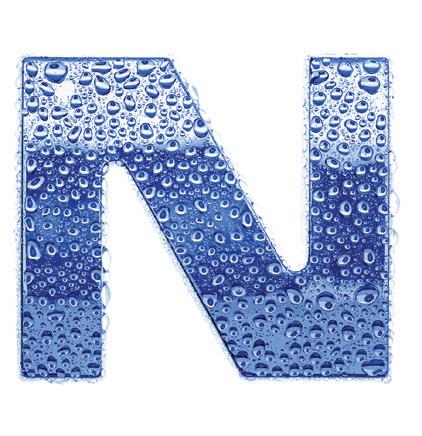

WWW.BOTTLEDWATER.ORG/MEMBERSHIP
] ADVERTISERS
CALENDAR 2024
WINTER 2023/2024 • BWR • 27 IBWA ADVERTISE WITH US IN 2024 For more information, email stephanie@bottledwater.org
BOTTLED WATER: BY THE NUMBERS
Health organization across the globe offer the following general guidelines for daily fluid consumption:
.5
But the co-founders of the Hydration Health Center, Colleen X. Muñoz, PhD, and Michael F. Bergeron, PhD, FACSM, warn that approach is too generalized. They say you should drink more fluids if you, for example, exercise or live in a warmer climate.
At least 48 countries include water on their nutrition guidance documents.

The United States does not. But IBWA is working to change that.

FOUNDED IN 2023, the University of Hartford’s Hydration Health Center is your source for evidence-based information related to healthy hydration practices.
www.hartford.edu/hydrationhealth
28 • BWR • WWW.BOTTLEDWATER.ORG
Residential Recycling Rates by Material Category
Recycling Access
Source: State of Recycling 2024. The Recycling Partnership. Aseptic & Gabletop Glass Containers* Aluminum Cans* PET Bottles* HDPE Natural Bottles 8% 27% 30% 28% 26% Can Recycle (Access) Cannot Recycle (No Access) 85% Access 37% Access 73% Access 15% 63% 27% *includes material captured through state deposit return systems
National
National
Single-Family Multifamily All Households











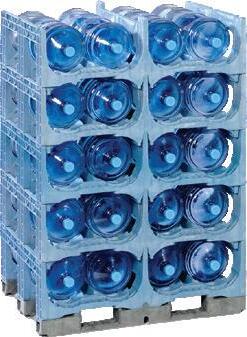


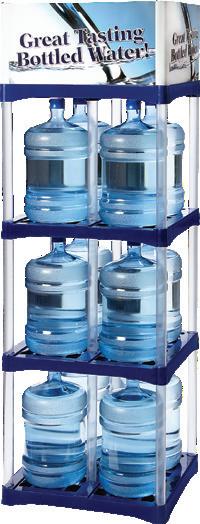

PO Box 310 Newtown Square, PA 19073 610.325.7500 www.ProStack.com PLASTIC PALLETS Bottle-Up® Perfect for Home, Office and Retail Storage UpRight Platform Delivery System™ Ideal for Vans and Cube Trucks Bottle Hammock Stable Delivery & Retrieval ProStack® & TierStack® HOD Rack for Warehouse, Transportation & Delivery Routes Delivery, Storage & Handling Solutions Safe • Strong • Durable CELEBRATING OUR 25TH YEAR IN BUSINESS! HOME DELIVERY INCREASING? Bottle-Ups® are Storage Solutions for your Customers! Patent Pending • Extend the life and condition of your bottle • Organize bottles in your utility room, closet or garage • Highly stable and durable storage rack • Store bottles in a vertical or horizontal position 02-SV 03-DV 05-DH We have a full line of returnable nestable and plastic pallets for your distribution needs. ADVERTISE WITH US IN 2024 For more information, email stephanie@bottledwater.org . CONSUMER WEBSITE www.bottledwatermatters.org














































































Innovation. Passion. Service. 1 (800) 781-1680 BRIOWT.COM | SALES@BRIOWT.COM















 Hih Song Kim IBWA Chair
Hih Song Kim IBWA Chair


 Joe Doss IBWA President
Joe Doss IBWA President




























































































































